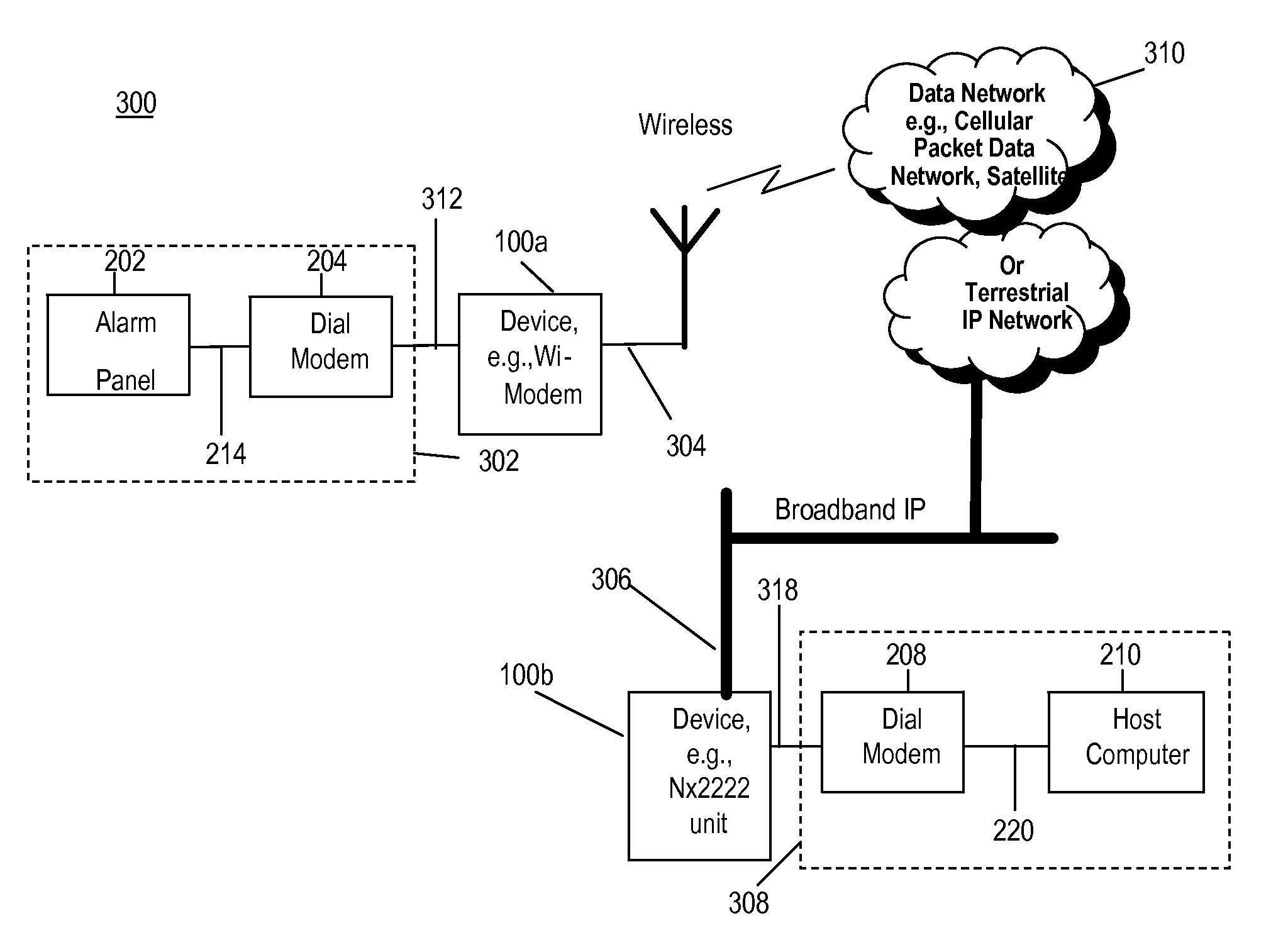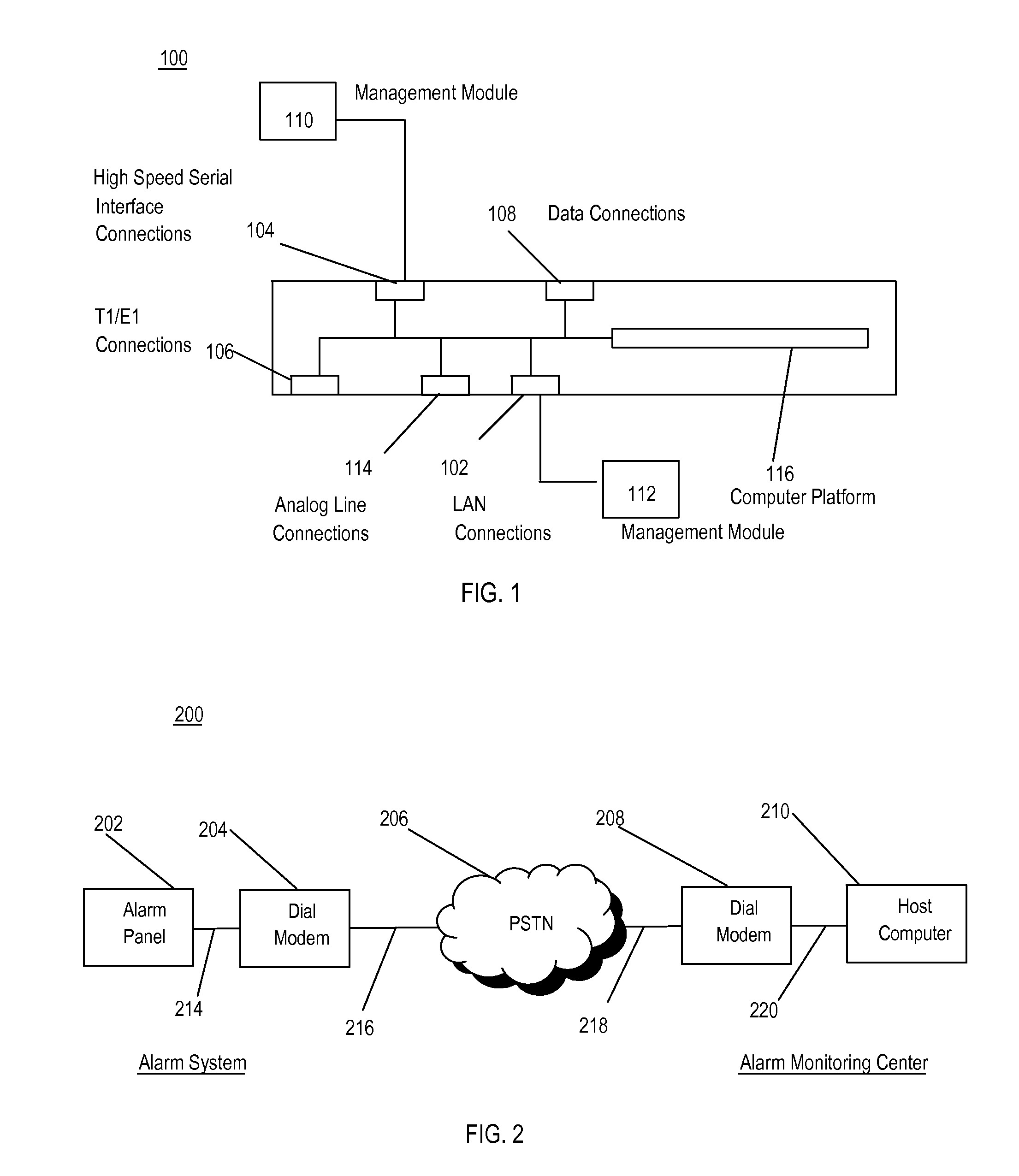System, method, and computer program product for connecting or coupling analog audio tone based communications systems over a packet data network
a packet data network and communication system technology, applied in data switching networks, multiplex communication, frequency-division multiplex, etc., can solve problems such as data errors, application being run over the link, and being much more susceptible to noise and small disturbances on the lin
- Summary
- Abstract
- Description
- Claims
- Application Information
AI Technical Summary
Benefits of technology
Problems solved by technology
Method used
Image
Examples
exemplary embodiment 300
[0105]In exemplary embodiments, analog modem tones may be transmitted from the alarm system 202 circuits of exemplary network 214, across link 312 to exemplary device 100a. Here, in exemplary device 100a the analog tones may be decoded and the decoded symbols transmitted over network links 304 and 306 to the second exemplary device 100b. Symbols received by the second exemplary device 100b may be converted into modem tones for transmission to the exemplary host 210 over network 220 of alarm monitoring center 308. In exemplary embodiment 300, the link 318 between exemplary device 100 and the alarm monitoring center 210, may be a digital T1 / E1 connection capable of supporting multiple simultaneous calls, or a single analog connection, which persons skilled in the art will recognize as being functionally equivalent for the current purpose.
[0106]In exemplary embodiments, analog modem tones may be transmitted from the alarm monitoring center 308 of exemplary network 220, across link 318 ...
exemplary embodiment 500
[0266]Referring to FIG. 5, in an exemplary embodiment 500, device 100c provides the ability to receive VoIP packets directly, such as, for example, but not limited to from a VoIP service provider, and act as a VoIP gateway converting these packets to PSTN 206 compatible signals (not illustrated), or as illustrated, receive the regenerated audio signal directly from the PSTN 206 as an analog line or a TDM link. While exemplary attributes such as VoIP and compression may be described, the foregoing terminology is employed for illustrative purposes only and is in no way to be construed as limitations of the present embodiments.
[0267]Referring to FIG. 5, in an exemplary embodiment, operation of the TRANSMITTER 302 and RECEIVER 308 systems may be identical to the descriptions already given with reference to FIG. 3. In the exemplary embodiment of FIG. 5, an audio signal received by the device 100c across the network 500 (including 506, 508, 206, and 510) may have been compressed and decom...
PUM
 Login to View More
Login to View More Abstract
Description
Claims
Application Information
 Login to View More
Login to View More - R&D
- Intellectual Property
- Life Sciences
- Materials
- Tech Scout
- Unparalleled Data Quality
- Higher Quality Content
- 60% Fewer Hallucinations
Browse by: Latest US Patents, China's latest patents, Technical Efficacy Thesaurus, Application Domain, Technology Topic, Popular Technical Reports.
© 2025 PatSnap. All rights reserved.Legal|Privacy policy|Modern Slavery Act Transparency Statement|Sitemap|About US| Contact US: help@patsnap.com



